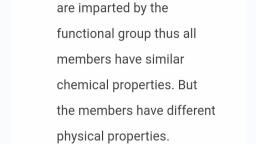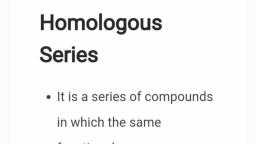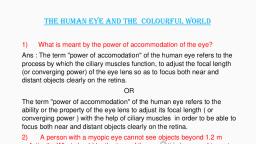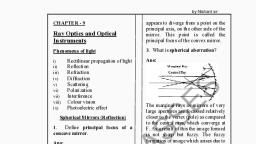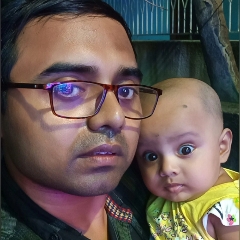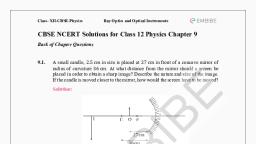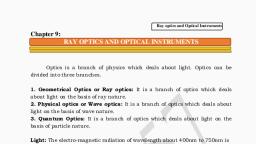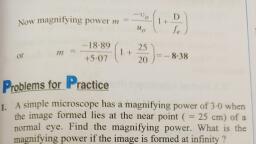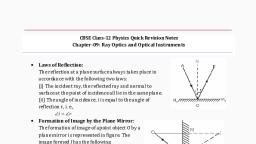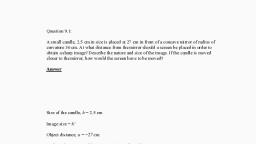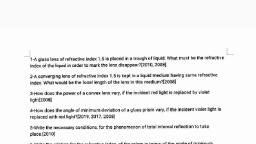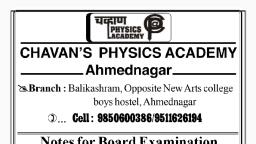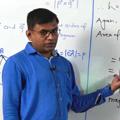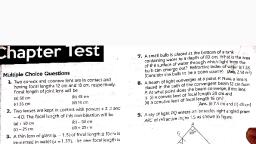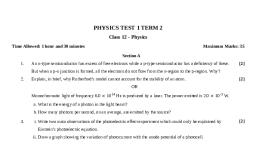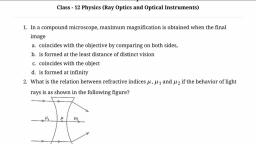Page 1 :
DEFECTS OF VISION, The far point of a myopic eye is 80 cm from the eye and the, near point is 20 cm. What lens must be used for distant, vision and what will be its near point with this lens ?, JAns. Concave lens of focal length 80 cm, 26.7 cm.], , A long-sighted person whose nearest distance of distinct, vision is 50 cm, finds that this distance is reduced to 20 cm, by using spectacles. Find the nature and the focal length of, the lens used., [Ans. Convex lens of focal length 33.3 cm.], 3 A defective eye whose near point is 100 cm wants to read a, hook at 25 cm distance. Find the nature and power of the, lens needed., [Ans. Convergent, +3D], 4. A person can see clearly upto a distance of 40 cm. Find the, nature and power of the lens which will enable him to see, clearly upto 200 cm., [Ans. Concave lens, -2D], 5. A person can see clearly only upto 3 m. Prescribe a lens for, his spectacles so that he can see clearly upto 12 m., [Ans. -0.25 D], SIMPLE MICROSCOPE, 6. A magnifying glass is made of a combination of a convex, lens of power +20 D and a concave lens of power - 4 D. If, the distance of the distinct vision of the eye is 25 cm,, calculate the magnifying power., [Ans. 5], 7. A simple microscope is rated at 5 x for a normal relaxed eye., What will be its magnifying power for a relaxed far-sighted, eye whose near point is 40 cm ?, [Ans. 8], 8. A child has a near point of 10 cm. What is the maximum, angular magnification the child can have with a convex lens, of focal length 10 cm ?, [Ans. 2], 9. The magnifying power of a simple microscope A is 1.25 less, than that of a simple microscope B. If the power of the lens, used in B is 25 D, find the power of the lens used in A. Given, that the distance of distinct vision is 25 cm., [Ans. 20 D]

